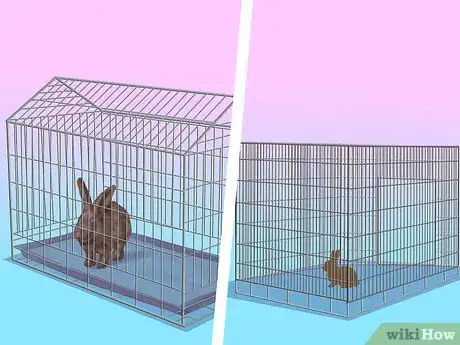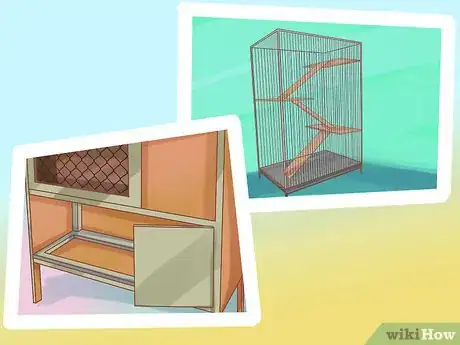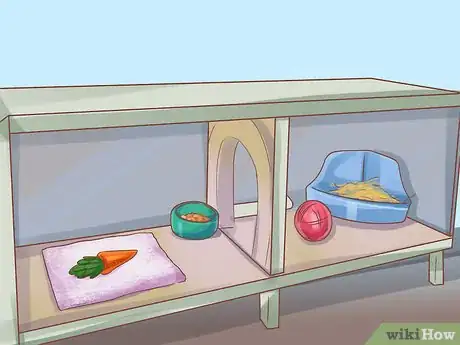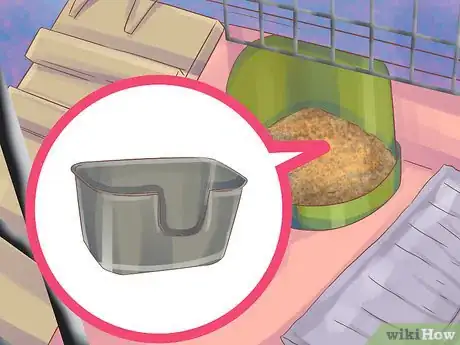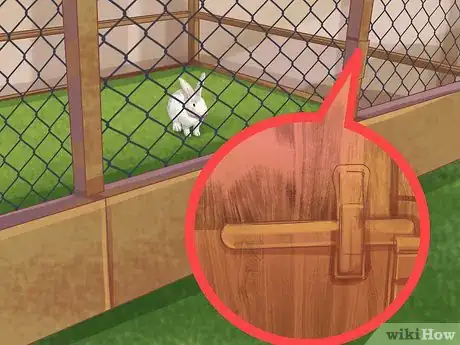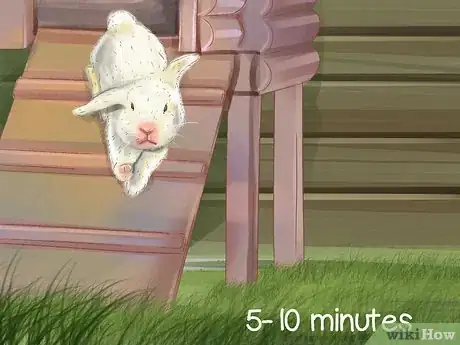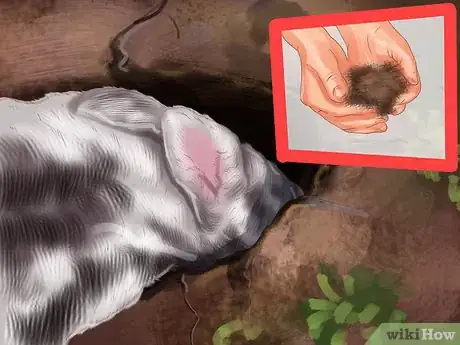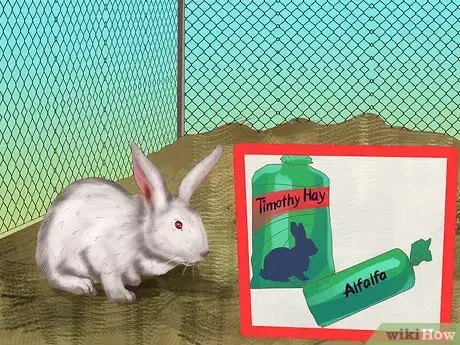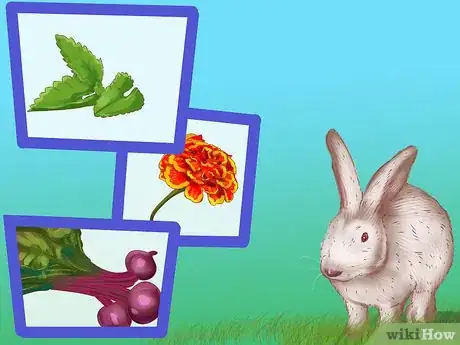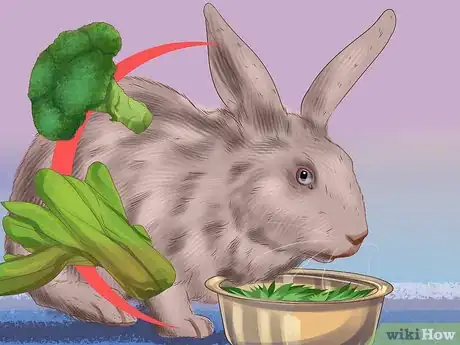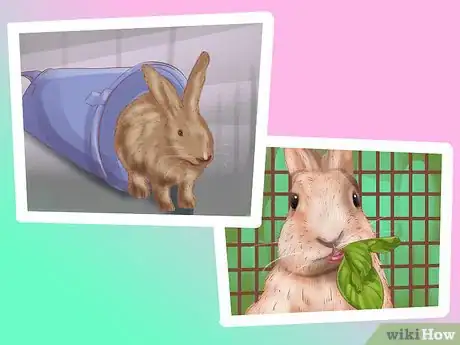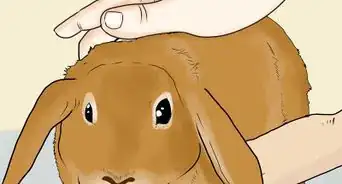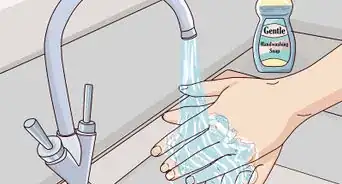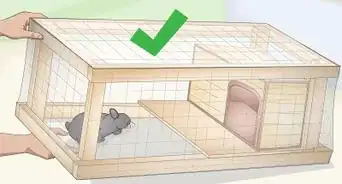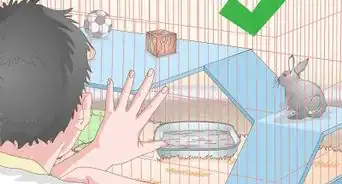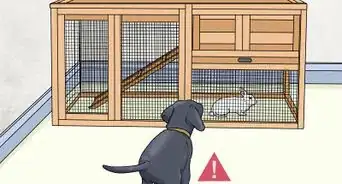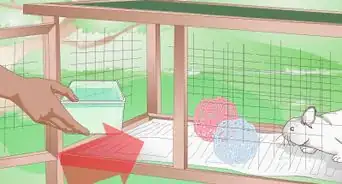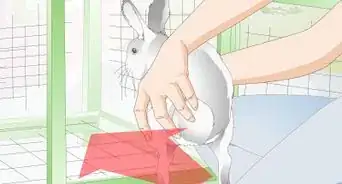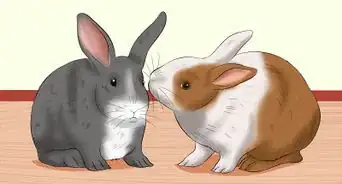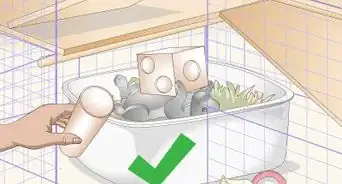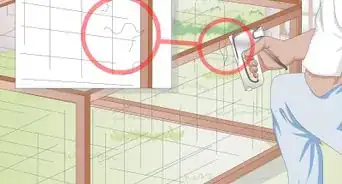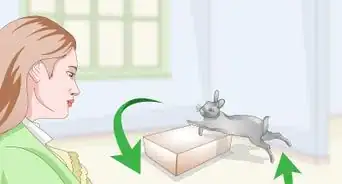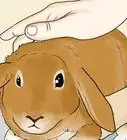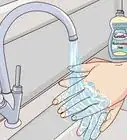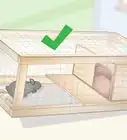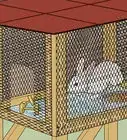This article was co-authored by Pippa Elliott, MRCVS. Dr. Elliott, BVMS, MRCVS is a veterinarian with over 30 years of experience in veterinary surgery and companion animal practice. She graduated from the University of Glasgow in 1987 with a degree in veterinary medicine and surgery. She has worked at the same animal clinic in her hometown for over 20 years.
There are 11 references cited in this article, which can be found at the bottom of the page.
This article has been viewed 28,813 times.
Playtime and exercise are important for a rabbit's health. They also keep your rabbit stimulated, which wards off boredom. Whether your rabbit is outdoor or indoor, it needs a “rabbitat,” or rabbit playground. This provides ample space for your rabbit to do things such as graze, hide, play, and eat.[1] A rabbitat is something you could buy pre-fabricated, but it's more fun to design your own. This allows you to incorporate special touches designed specifically for your rabbit. You can design a play space for your rabbit by considering important elements of a rabbitat and assembling the area for maximal enjoyment.
Steps
Figuring Out Important Rabbitat Components
-
1Recognize the difference between a rabbitat and a cage. You can use your rabbit playground as housing for your rabbit, or it may be part of daily playtime. In general, a rabbitat is a larger, more open space that provides elements such as grazing space, foraging opportunities, and hiding spots. Cages may be smaller and a space in which you house the rabbit when you're away.[2]
- Consider using an enclosed playground instead of a cage. The more room your rabbit has to play, the happier it is. This also integrates your rabbit more effectively into your family.
- Use pre-fabricated cubes, puppy pens, and stackable rabbit condos for the playground. You can also order pre-fabricated rabbit playgrounds or even boxes you have around the house. These differ from cages in their spatial dimensions and what they offer a rabbit for hiding, climbing, and foraging spaces.
-
2Consider available space. Rabbits naturally jump around in the wild. They also like to spend time underground. Your rabbitat will need enough space for jumping and burrowing.[3] Ideally, your rabbitat should be at least 32 square feet.[4]
- Designate space within a room or an entire room for your rabbit playground. If you live in a small home or an apartment, you may want to invest in stackable hutches, cubes, or condos. These allow you to offer plenty of space for jumping and hiding as well as a litter pan.[5]
- Make sure your designated space is in a cooler spot. Rabbits are very sensitive to heat and don't like direct sunlight. Bedding you add can keep your rabbit warm if the room or weather is cooler.[6]
Advertisement -
3Provide cozy nooks. Rabbits are most active at dawn and dusk. Because of this, they often sleep during the day.[7] Incorporate dark, cool, and cozy spaces in the playground for your rabbit to sleep. These also provide an area to hide if your rabbit feels threatened.
- Use boxes or hutches as sleeping spaces. These provide shade and darkness that allow your rabbit to sleep and hide. They also offer cozy nooks and corners that your rabbit can cuddle into.
- Place a dark cloth over the playground if you're using stackable pieces. This can provide necessary shade and darkness for your rabbit to sleep and hide. You can use an old sheet or purchase a cover specifically designed for rabbit housing and playgrounds.[8]
-
4Leave a space for a litter pan. Rabbits are very clean animals. They generally choose one specific area for toileting.[9] Make sure you allot sufficient space for your bunny's litter pan for its health and happiness.[10]
- Use a cat litter pan for your bunny. Rabbit litter boxes are often too small to make a bunny comfortable.
-
5Secure the playground. No matter if your rabbit playground is indoor or outdoor, keeping it secure is very important. This can prevent your rabbit from escaping or other animals from preying on your pet. It also ensures that your rabbit can hide if it is scared. Rabbits can die of fright if a predator is visible at close range.[11]
- Make sure any latches on the playground are secure. Check to see that your bunny can't jump out of the playground if it is exposed to the open air.
- Avoid leaving your rabbit unsupervised in the playground if it is not the primary housing. This can prevent your rabbit from injury or other harm.
Putting Finishing Touches on the Playground
-
1Consider time for play when outfitting the rabbitat. Take a moment to consider how much time a rabbit needs in a play every day to stay happy and healthy. This can help you decide where to splurge and save on the playground. Your rabbit should spend at least 5 hours a day in the rabbitat to promote its health and happiness.[12]
-
2Add some dirt. Rabbits live in warrens in the wild. These are underground networks of interconnecting burrows and tunnels. Adding dirt or garden soil to the rabbitat provides extra fun for your rabbit and allows it to indulge its natural behaviors.[13]
- Designate a space in your outdoor rabbit playground for dirt. Make a small pile of regular garden soil for your rabbit to enjoy.
- Fill a small litter pan with dirt if your rabbit playground is inside your home. This can provide your rabbit with the enjoyment of burrowing while containing the mess to one area.
-
3Spread a layer of hay on the ground. Hay is a key component to any rabbit's diet and well-being. It provides something to munch on as well as nesting material for warmth.[14] Adding a layer of Timothy or mixed grass hay can help keep your rabbit happy and healthy. You can find mixed grass and Timothy hay at pet stores, most large retailers, and many hardware or farming stores.
- Use alfalfa hay if you prefer. However, it's higher in calories and calcium than mixed grass or Timothy hay, which can promote weight gain.
- Make sure there is plenty of hay in the rabbitat's sleeping space. This keeps your rabbit cozy and warm.
-
4Place greens and flowers in the playground. Rabbits don't need greens as a major part of their diet. However, fresh cut greens and flowers do have dietary and emotional benefits for rabbits. Add a variety of upright greens and flowers so that your rabbit can stand up and stretch to reach the leaves, just like it would do in nature. Make sure that your rabbit doesn't get more than a handful of greens every day.[15] The following greens and flowers are safe for rabbits:[16]
- Alfalfa, radish, and clover sprouts
- Beet greens
- Cilantro
- Dandelion greens and flowers
- Mint
- Mustard Greens
- Pea pods
- Parsley
- Peppermint leaves
- Raspberry leaves
- Wheat grass
- Daisy[17]
- Marigold
- Cornflower
- Sunflower
- Lavender
- Rose
-
5Provide clean food and water. Rabbits need fresh food and water every day. This helps maintain their health and happiness. In addition to any greens you place in the rabbitat, make sure that your rabbit also has readily accessible clean food and water every day.[18]
- Feed your rabbit high quality food such as alfalfa or Timothy-based pellets. In addition, give the rabbit one cup of vegetables for every 4 pounds of body weight. Some vegetables rabbits like include bok choy, broccoli, Brussels sprouts, carrots, celery, spinach, and watercress.[19]
- Treat your rabbit to 1-2 tablespoons of fruit per 5 pounds of body weight. Fruits rabbits enjoy include apples, melons, peaches, pineapple, plums, and raspberries.
-
6Up the fun factor with toys and tunnels. Your rabbitat should have spaces for tunneling, grazing, exploring, climbing, climbing, chewing, hiding, and perching. Your choices of hutches and condos provide ample opportunity for these. You can increase your bunny's enjoyment by adding toys and more tunnels to the playground.[20]
- Set PVC piping and/ or toilet or paper towel rolls for additional tunneling options. Paper bags also provide good tunneling options.
- Provide wooden chew toys for flinging, chewing, pulling, and batting. Untreated wicker baskets and wood branches also make great chew toys.
- Consider plastic cat and baby toys that your rabbit can push over and make noise. Metal lids are a great alternative to toys.
- Place a couple of old towels in the playground for your rabbit to bunch up and scoot around with its paws. Just make sure the rabbit doesn't eat the towel.
Things You'll Need
- Hutches or condos
- Cardboard boxes
- PVC tubing
- Hay
- Toys
- Litter pan
References
- ↑ http://www.ntrs.org/house-and-play-area-ideas.html
- ↑ http://www.ntrs.org/house-and-play-area-ideas.html
- ↑ http://www.pfma.org.uk/rabbits-ideal-home
- ↑ http://rabbit.org/faq-housing/
- ↑ https://www.petfinder.com/pet-care/rabbit-care/designing-rabbit-playground/
- ↑ http://www.pfma.org.uk/rabbits-ideal-home
- ↑ http://www.pfma.org.uk/rabbits-ideal-home
- ↑ http://www.ntrs.org/house-and-play-area-ideas.html
- ↑ http://www.pfma.org.uk/rabbits-ideal-home
- ↑ http://www.ntrs.org/house-and-play-area-ideas.html
- ↑ https://www.petfinder.com/pet-care/rabbit-care/designing-rabbit-playground/
- ↑ http://rabbit.org/faq-housing/
- ↑ https://www.petfinder.com/pet-care/rabbit-care/designing-rabbit-playground/
- ↑ http://www.pfma.org.uk/rabbits-ideal-home
- ↑ https://www.petfinder.com/pet-care/rabbit-care/designing-rabbit-playground/
- ↑ http://rabbit.org/what-to-feed-your-rabbit/
- ↑ http://bunnyapproved.com/edible-flowers-and-petals-for-rabbits/
- ↑ http://www.ntrs.org/house-and-play-area-ideas.html
- ↑ http://rabbit.org/what-to-feed-your-rabbit/
- ↑ https://www.petfinder.com/pet-care/rabbit-care/designing-rabbit-playground/
About This Article
If you want to design a playground for your rabbit, make an enclosed area that’s at least 32 square feet. The more room you give your rabbit, the happier it will be! To create this space, you can use things like stackable rabbit condos, puppy pens, and cubes. Once you have the basic area set up, make sure there are dark, cozy nooks for your rabbit to hide and sleep in. Since rabbits love to burrow, add some dirt or garden soil to a space in the playground. They also love to explore and play, so put in toys and tunnels like wooden chew toys, plastic baby toys, PVC piping, and toilet paper rolls for some extra fun. To give your rabbit something to snack on in its playground, spread a layer of hay on the ground, which it can use to keep warm while nesting too. To ensure your rabbit stays healthy while in its playground, add a cat litter pan for it to use for toileting. For more help from our Veterinary co-author, including what kinds of greens and flowers to place in your rabbit's playground, scroll down!
